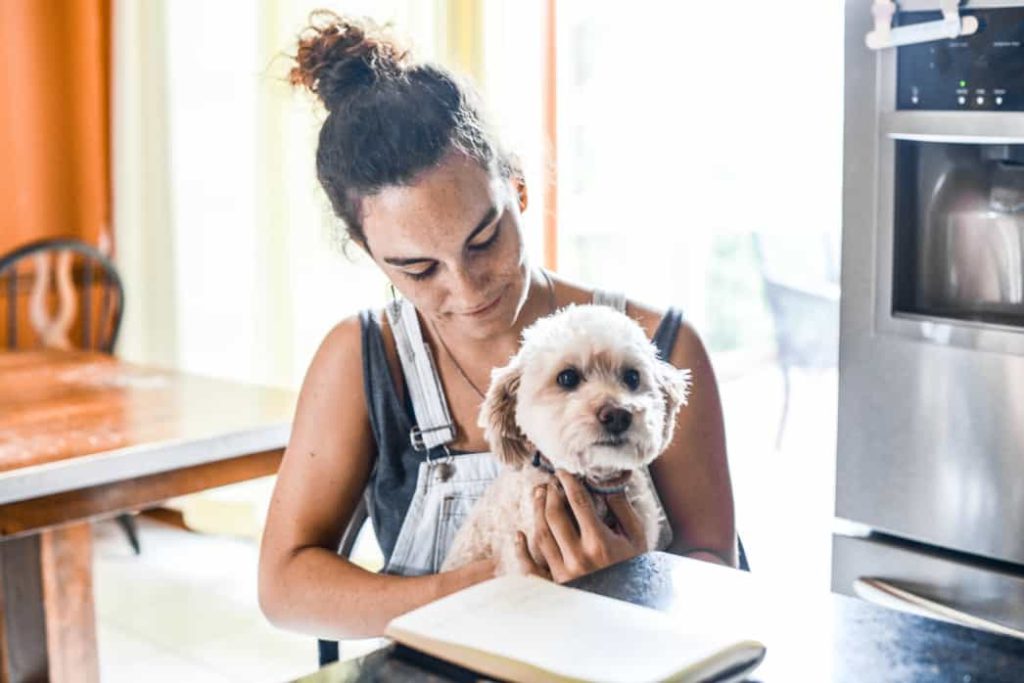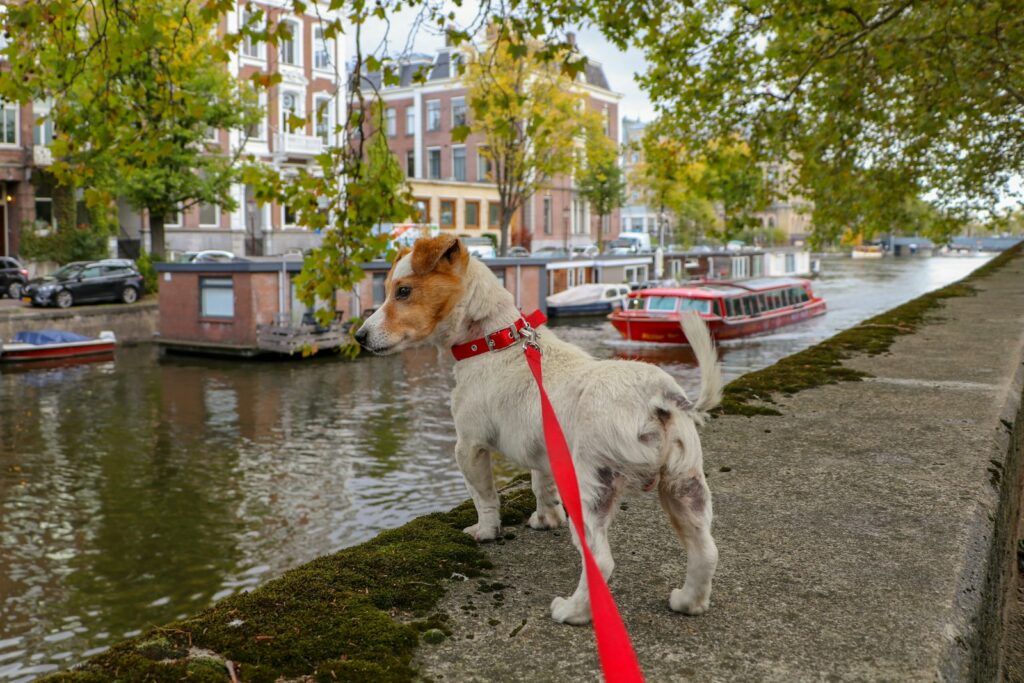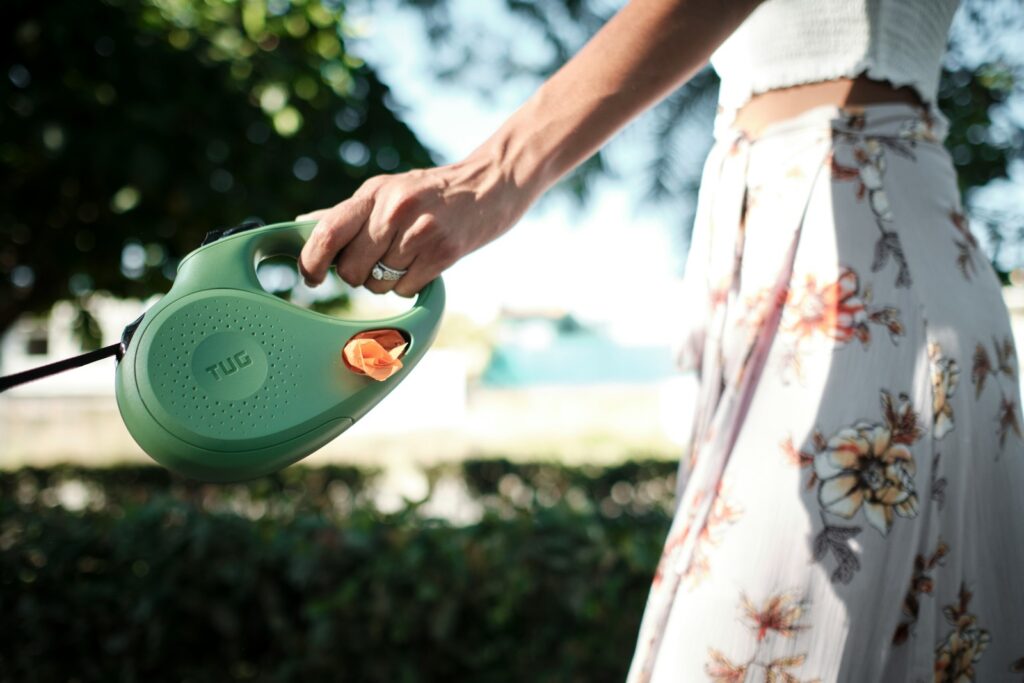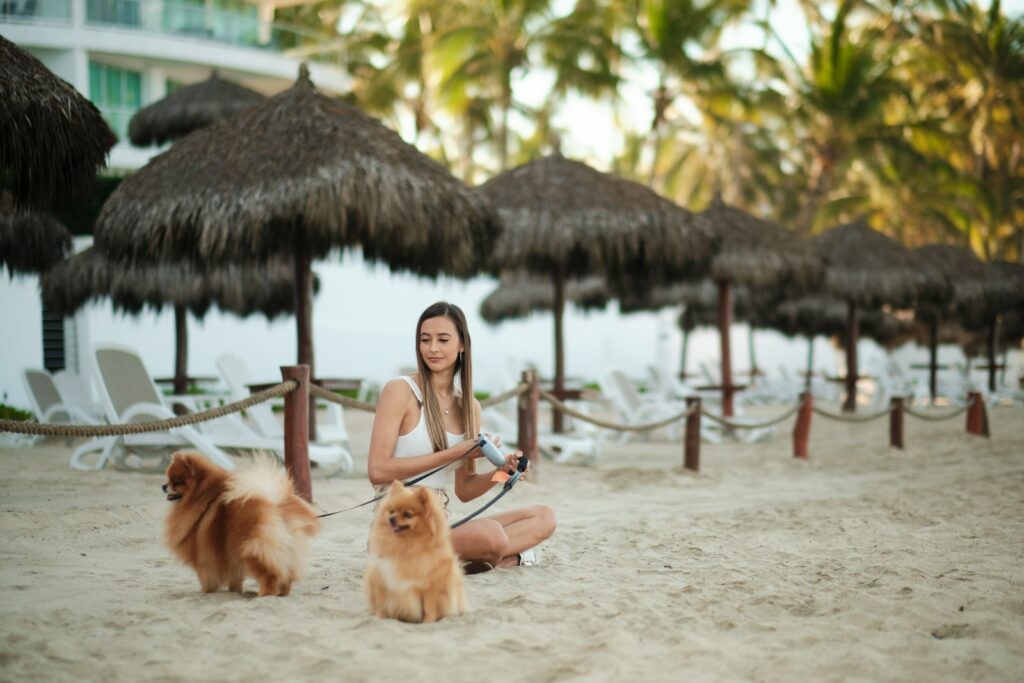Choosing the right dog leash for small dogs can make walks safer and more enjoyable. Small breeds like Chihuahuas, Yorkshire Terriers, and Pomeranians have unique needs that differ from those of their larger counterparts. This guide explores the various aspects of selecting and using leashes tailored for petite pooches.
Small dogs face distinct challenges during walks. Their size makes them vulnerable to injury from sudden pulls or encounters with larger animals. Additionally, their delicate frames require careful consideration when selecting leash materials and attachments.
The market offers a wide array of options for small dog owners. From retractable leashes by brands like Flexi to designer options from luxury houses such as Gucci, the choices can seem overwhelming. However, the key lies in finding a balance between functionality, safety, and comfort.
A proper leash isn’t just a tether; it’s a vital communication tool between dog and owner.
Top-10 Dog Leashes
| Image | Price | Buy | Prime | Title |
|---|---|---|---|---|
 Top Top | Buy on Amazon | PrimeEligible | TUG 360° Tangle-Free Retractable Dog Leash | 16 ft Strong Nylon Tape | One-Handed Brake, Pause, Lock (Medium, White) | |
 Top Top | Buy on Amazon | PrimeEligible | BAAPET 2/4/5/6 FT Dog Leash with Comfortable Padded Handle and Highly Reflective Threads for Small Medium and Large Dogs (5FT-1/2'', Black) | |
 Top Top | Buy on Amazon | PrimeEligible | Fida Retractable Dog Leash, 16 ft Dog Walking Leash for Small Dogs up to 26 lbs, 360° Tangle Free, Black | |
 Top Top | Buy on Amazon | PrimeEligible | iYoShop Hands Free Dog Leash with Zipper Pouch, Dual Padded Handles and Durable Bungee for Walking, Jogging and Running Your Dog (Large, 25-120 lbs, Black) | |
 Top Top | Buy on Amazon | PrimeEligible | Mighty Paw Retractable Dog Leash 2.0 | 16' Heavy Duty Reflective Nylon Tape Lead for Pets up to 110lbs. Tangle Free Design W/One Touch Quick-Lock Braking System & Anti-Slip Handle (Green/Lite) |
As an Amazon Associate we earn from qualifying purchases.
When selecting a leash for a small dog, consider these factors:
- Size and weight of the dog
- Walking environment (urban vs. rural)
- Training needs
- Owner’s personal style preferences
In recent years, innovations in leash design have been seen, specifically for small breeds. Companies like Puppia have developed harness-leash combinations that distribute pressure more evenly across a dog’s body, reducing strain on delicate necks.
Remember, local regulations may impact leash choices. For example, New York City enforces a 6-foot leash rule in many public areas. Always check local laws before purchasing a new leash.
This guide will delve into the various aspects of choosing and using the perfect leash for small dogs, ensuring both pet and owner can enjoy safe and comfortable walks together.
Types of Leashes for Small Dogs
Owners have several options when it comes to small dog leashes. Each type serves a different purpose and suits various situations.
Standard flat leashes offer reliability and control. They come in different widths, typically ranging from 3/8 inch to 1 inch. Narrower widths work best for small dogs. Brands like Coastal Pet Products provide durable nylon flat leashes suitable for tiny breeds.
Retractable leashes give dogs more freedom to explore. Flexi, a German company founded in 1973, popularized this design. While convenient, these leashes require careful handling, especially in busy areas.
Adjustable-length leashes offer versatility. They allow owners to shorten or lengthen the leash as needed. This feature proves useful when transitioning from crowded streets to open parks.
Harness-leash combinations distribute pressure evenly across a dog’s body. Puppia, a South Korean brand, offers lightweight harness-leash sets designed specifically for small breeds.
The best leash is one that keeps your dog safe while allowing for comfortable exploration.
Here’s a comparison of leash types:
| Leash Type | Pros | Cons |
|---|---|---|
| Standard Flat | Durable, easy to control | Limited length |
| Retractable | Allows more freedom | Requires careful handling |
| Adjustable | Versatile for different environments | Maybe bulkier |
| Harness-Leash Combo | Reduces neck strain | It can be more expensive |
Choose a leash type that matches your dog’s temperament and your walking environment. Urban dog owners might prefer shorter, more controllable leashes, while those in suburban or rural areas may opt for longer or retractable options.

Dog Leash For Small Dogs: Materials and Durability
The material of a small dog leash impacts its durability, feel, and functionality. Several options exist, each with unique properties.
Nylon is a popular choice because it’s lightweight, strong, and available in various colors. Brands like PetSafe offer affordable nylon leashes that withstand regular use. However, determined chewers might damage nylon leashes over time.
Leather leashes are durable and develop a nice patina with age. They’re also less likely to cause rope burn if a dog pulls suddenly. Leather Brothers, an Arkansas-based company founded in 1991, crafts high-quality leather leashes for all dog sizes.
Rope-style leashes offer a good grip and often feature reflective threading for nighttime visibility. They’re particularly popular among owners of active small breeds like Jack Russell Terriers.
Biothane, a relatively new material, combines the strength of nylon with the feel of leather. It’s waterproof and easy to clean, making it ideal for dogs who love water or muddy walks.
A leash’s durability depends on the material and the dog’s habits.
Consider these factors when choosing leash material:
- Your dog’s chewing tendencies
- Local climate and weather conditions
- Frequency of use
- Ease of cleaning
Durability also depends on proper care. Regular cleaning and inspection can extend a leash’s lifespan. For nylon leashes, a simple wash with mild soap and water suffices. Leather leashes benefit from occasional conditioning to prevent cracking.
Remember, even the most durable leash eventually needs replacement. Frayed edges, weakened clips, or signs of excessive wear indicate it’s time for a new leash. Prioritize safety over-sentimentality when it comes to your small dog’s leash.
Safety Features for Tiny Canines
Safety should be the top priority in leash selection for small dogs. Several features can significantly enhance the security of your petite pooch during walks.
Reflective elements improve visibility during low-light conditions. Many modern leashes incorporate reflective stitching or patches. Ruffwear, an Oregon-based company founded in 1994, offers leashes with highly reflective trim, ensuring your small dog remains visible to motorists and cyclists.
Quick-release mechanisms allow for rapid detachment in emergencies. This feature proves especially useful if your small dog gets tangled or caught on something during a walk. However, ensure the mechanism isn’t too easy for your dog to trigger accidentally.
Traffic handles provide extra control in busy urban environments. These short loops near the leash clip allow owners to keep their dogs close when navigating crowded sidewalks or crossing streets. The Halti Training Lead, popular among professional trainers, incorporates this feature effectively.
Proper clip strength is crucial for securing small dogs. Look for sturdy metal clips that can withstand sudden movements without breaking or opening. Avoid plastic clips, which may crack over time.
A safe leash combines thoughtful design with quality materials to protect your small companion.
Consider these safety features when choosing a leash:
- Reflective elements for nighttime visibility
- Quick-release mechanism for emergencies
- Traffic handle for close control
- Strong, reliable clip
Remember, even the safest leash requires proper use. Always supervise your small dog during walks and be aware of potential hazards in your environment.

Leash Length Considerations
Choosing the right leash length for your small dog depends on various factors, including your walking environment and your dog’s behavior. Different lengths serve different purposes and suit multiple situations.
Short leashes, typically 4 feet or less, offer maximum control. They work well in crowded urban areas or for dogs in training. The EzyDog Zero Shock leash, available in a 48-inch length, provides excellent control for small breeds in busy environments.
Standard leashes usually measure 6 feet, striking a balance between control and freedom. This length complies with leash laws in many areas, including New York City’s parks, where leashes must not exceed 6 feet.
Long leads, ranging from 10 to 30 feet or more, serve specific purposes:
- Training recall
- Allowing more freedom in open spaces
- Practicing obedience commands at a distance
However, long leads require careful handling to prevent tangling or injuries.
The ideal leash length allows for control while giving your dog enough freedom to explore safely.
Here’s a comparison of leash lengths:
| Length | Best For | Challenges |
|---|---|---|
| Short (4′ or less) | Urban walks, training | Limited freedom for a dog |
| Standard (6′) | General use, most environments | Balancing control and freedom |
| Long (10’+ ) | Open spaces, training | Requires more skill to handle |
When selecting leash length, consider local regulations. For instance, in San Francisco, the law requires leashes to be no longer than 8 feet in most public areas.
Remember, retractable leashes offer variable lengths but require extra caution. The Humane Society of the United States advises against using them in crowded areas due to potential hazards.
Ultimately, the right leash length depends on your small dog’s temperament, your walking environment, and your handling skills. Many owners find it helpful to have multiple leashes of different lengths for various situations.
Training Small Dogs with Appropriate Leashes
Training small dogs requires patience, consistency, and the right tools. The appropriate leash plays a crucial role in this process, facilitating effective communication between owner and pet.
Positive reinforcement techniques work well with small breeds. Treats and praise can be used to reward good behavior on the leash. The PetSafe Treat Pouch, designed for easy access during walks, can aid in this training method.
Addressing common issues like pulling requires a strategic approach. For small dogs, a front-clip harness combined with a standard 6-foot leash can discourage pulling behavior. The 2 Hounds Design Freedom No-Pull Harness, available in sizes for tiny breeds, effectively redirects a dog’s attention back to the owner when they pull.
Renowned trainer Victoria Stilwell emphasizes the importance of consistency in leash training. Her “Positively” method, popularized through her Animal Planet show “It’s Me or the Dog”, advocates for gentle, reward-based training techniques.
Leash training is a journey, not a destination. Patience and persistence yield the best results.
When training small dogs on leashes, consider these steps:
- Start indoors in a quiet environment
- Gradually introduce distractions
- Practice in short sessions (5-10 minutes)
- Move to outdoor environments once basic skills are mastered
Transitioning from indoor to outdoor walks requires careful planning. Begin in a quiet outdoor area, like a fenced backyard, before venturing into busier environments. The ASPCA recommends this gradual approach to help small dogs build confidence on the leash.
Remember, each dog learns at their own pace. Tailor your training approach to your small dog’s personality and needs.

Health and Comfort Factors
Selecting the right leash for a small dog involves considering both the pet’s health and comfort. Proper equipment can prevent injuries and ensure enjoyable walks for both the dog and the owner.
Neck strain poses a significant concern for small breeds. Traditional collars can put pressure on delicate throats, especially if the dog pulls. To prevent this, consider using a harness with a back-clip leash attachment. The Puppia Soft Dog Harness, popular among owners of toy breeds, distributes pressure evenly across the chest.
For dogs with respiratory issues, such as Pugs or Shih Tzus, avoiding neck pressure becomes even more critical. The American Kennel Club recommends harnesses for brachycephalic breeds to protect their airways during walks.
Padded handles on leashes provide comfort for owners, especially during longer walks or when managing a pulling dog. The Max and Neo Double Handle Traffic Dog Leash features neoprene-padded handles that reduce hand fatigue.
The weight of the leash matters for tiny dogs. Ultra-lightweight options, like the Gooby Choke Free Comfort X Harness & Leash, suit breeds under 5 pounds.
A comfortable leash setup promotes healthier, more enjoyable walks for both dog and owner.
Consider these factors when selecting a leash for your small dog’s health and comfort:
- Pressure distribution (collar vs. harness)
- Respiratory needs of brachycephalic breeds
- Handle comfort for extended use
- Weight of leash relative to dog’s size
Here’s a comparison of leash attachments:
| Attachment Type | Pros | Cons |
|---|---|---|
| Collar | Simple, traditional | Can strain neck |
| Back-clip Harness | Distributes pressure evenly | May not discourage pulling |
| Front-clip Harness | Can reduce pulling | Requires proper fitting |
The right choice depends on your dog’s specific needs. If you’re unsure which option best suits your small dog’s health requirements, consult with a veterinarian.
Remember, comfort extends to fit. Regularly check that your dog’s harness or collar fits properly, allowing two fingers’ width between the equipment and your dog’s body.
Style and Personalization Options
Small dog owners often seek leashes that reflect their personal style while meeting their pet’s needs. The market offers a wide array of options, from luxurious designer pieces to custom-made creations.
Designer brands have entered the pet accessory market, catering to fashion-conscious dog owners. Gucci’s pet collection, launched in 2022, includes leather leashes adorned with the iconic GG motif. These high-end options combine style with quality materials.
For a more personal touch, custom-made leashes from Etsy creators offer unique designs. Many artisans create handcrafted leashes tailored to specific breeds and owner preferences. For instance, the Etsy shop “PupPanache” specializes in personalized, small-batch leashes for tiny breeds.
Matching leash and collar sets provide a coordinated look. Brands like Found My Animal, based in Brooklyn, offer nautical-inspired leash and collar combinations that suit small dogs well.
Seasonal and holiday-themed options allow owners to celebrate with their pets. Petco’s annual “Bootique” collection features Halloween-themed leashes and accessories, perfect for festive walks in October.
A stylish leash can make walks more enjoyable, but never compromise safety for fashion.
Consider these factors when choosing a stylish leash:
- Material quality and durability
- Appropriate size and weight for your dog
- Compatibility with your dog’s harness or collar
- Ease of cleaning and maintenance
Here’s a comparison of personalization options:
| Option | Pros | Cons |
|---|---|---|
| Designer Brands | High-quality, fashionable | Expensive |
| Custom-made | Unique, personalized | Longer wait times |
| Matching Sets | Coordinated look | May limit options |
| Seasonal Themes | Fun, festive | Less versatile |
Remember, while style is important, functionality should remain the top priority when selecting a leash for your small dog.

Dog Leashes For Small Dogs: Maintenance and Care
Proper maintenance of your small dog’s leash ensures its longevity and your pet’s safety. Regular care can prevent unexpected breakages and maintain the leash’s appearance.
Cleaning methods vary depending on the leash material. For nylon leashes, a simple wash with mild soap and warm water suffices. Leather leashes require special care; use a leather cleaner like Leather Honey, followed by a conditioner to prevent cracking. Biothane leashes, known for their easy maintenance, can be cleaned with a quick wipe or run through the dishwasher.
Proper storage prevents damage when the leash isn’t in use. Hang leashes away from direct sunlight and heat sources, which can weaken the material over time. The Kurgo Leash Storage System, designed for home use, provides an organized solution for storing multiple leashes.
Knowing when to replace a worn leash is crucial for your dog’s safety. Inspect the leash regularly for signs of wear, such as fraying, thinning, or damaged hardware. Most experts recommend replacing nylon leashes every 1-2 years, depending on use.
For minor issues, DIY repair techniques can extend a leash’s life. Small frays in nylon leashes can be sealed with a flame, while loose stitching can be reinforced with a needle and thread. However, never compromise safety – if in doubt, replace the leash.
Regular maintenance keeps your leash functional and safe, potentially saving money in the long run.
Follow these maintenance tips:
- Clean according to material type
- Store properly when not in use
- Inspect regularly for wear and tear
- Address minor issues promptly
- Replace when showing significant wear
Here’s a maintenance schedule for different leash materials:
| Material | Cleaning Frequency | Replacement Timeline |
|---|---|---|
| Nylon | Weekly | 1-2 years |
| Leather | Monthly | 3-5 years |
| Biothane | After each use | 2-3 years |
Remember, these timelines are general guidelines. Heavy use or extreme conditions may necessitate more frequent cleaning or earlier replacement.
By maintaining your small dog’s leash properly, you ensure safe and enjoyable walks for years to come.













